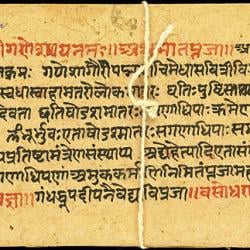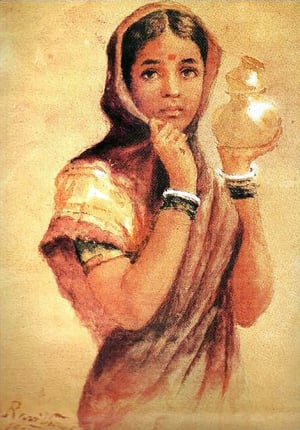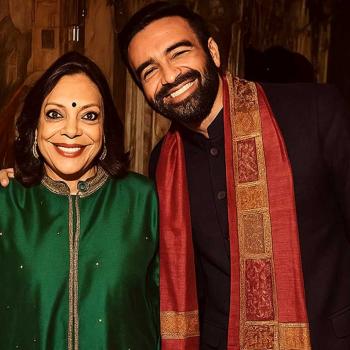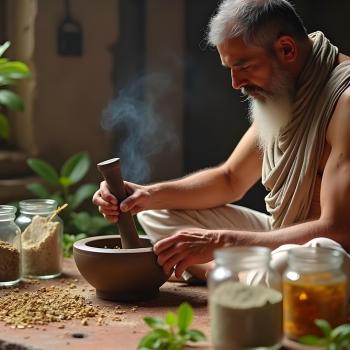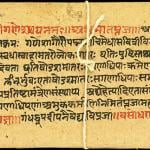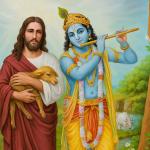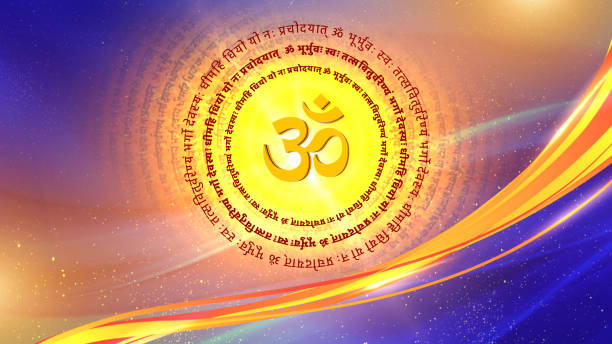
Clarification
Before I begin, I want to clarify that I have no intention to disrespect any other religion because this topic does demand some kind of comparison between Hinduism and other religions.
The only idea of bringing other religions is for differences that do exist but that does not mean one is superior to the other. Thank you.
Introduction
Rajiv Malhotra states in his book ‘Sanskrit Non-Translatables’:
The richness of the meaning of a word is often deeply embedded in the cultural context, in the history of how that word evolved over time and in the wider context of nuances and implied meaning that accompany its usage.
The unique experiences of different cultures are not always interchangeable and the words used to refer to those experiences must remain intact. If linguistic categories get lost, so over time, does the diversity of cultural experience.
To understand the nuances of a word, it is necessary to understand the host culture. Language reflects and shapes culture’s way of thinking owing to its deep structures and categories.
Examples
I would like to give a few examples here that clearly show how important is the link of the cultural experience with the words or the sayings.
If you do not like the weather, just wait for 6 minutes. This is the saying in Scotland. Can you translate it in any other language and still convey the same meaning?
This is a popular saying in Bharat; Man changa to kathrotme Ganga (मन चंगा तो कथरोटमें गंगा)’.
This means that if your mind is pure, then you can find the sacred river Ganga even in your own vessel (at home).
Ganga is a sacred river that flows only in Bharat, so translating this saying would lose its meaning.
And, to cite a few examples of the words: Bhangara dance, Chhole-Bhature, Rasam, Yoga, Computer, Pizza, Burger or even festivals like Dipavali, Holi etc. None of these words are translatable.
So, today I want to write about five most important Samskrit words that we wrongly translate, use widely, and passively accept without any question. I have picked up them from the book ‘Sanskrit Non-Translatables’ by Rajiv Malhotra and the offer explanation generously using his words used along with my own understanding of the subject.
Some Important Words
1. Atman is ≠ Soul, Spirit
The cosmological differences between India and the West are reflected in their respective views of the ultimate nature of the self. In the Indian philosophy, the true nature of self is sat-chit-anand which can be realized by anyone through the medium of adhyatma-vidya, sadhana.
As per Christian religion, every individual is a born sinner and the only way for the sinner to save himself is through his belief in and surrendering to Jesus. So, all one must do is go to the Church, and through that medium accept Jesus as the saviour. He does not have to do any sadhana or meditation to be saved. External intervention of God is adequate for the sinner to be redeemed of his sins.
In Hinduism, one’s true self is Atman, which reflects the supreme transcendent Brahman, thus part of the same Param Atma (or Paramatma/Brahman/Superconscious) and as such totally different from the Judeo-Christian concept of soul or spirit.
These religions do not believe any other species have Atman except humans, while Hinduism believes every living being, including plants, have Atman.
Souls do not reincarnate while Atman does. Souls do not get affected by Karma while Atman does.
There is an interesting sideline to this topic.
Whenever Hindus convey our grief to the family when there is some death, they oftentimes wish RIP.
While it’s fine to wish RIP to Christian families, it’s completely incorrect to wish so for the Hindu families.
RIP is rest in peace. While they believe their souls will be resurrected on the day of the judgment and they all will gather together and meet their families etc., so till that day, their souls need to rest in peace.
Hindus believe that after the death, the Atman has to go up and either merge with the Param Atma or take another body to reincarnate to fulfill the cycle of Karma and rebirth.
So, Hindus do not need to wish RIP to Hindus. In fact, that’s also the reason, they cremate the bodies because bodies are not at all important from Hindu philosophy point of view.
So, with no disrespect to the other religions at all, I hope you agree with me that Atman is not same as soul and spirit and we should avoid this pitfall of considering both as the same.
2. Dharma is ≠ Religion
One of the several meanings of religion as per the Merriam Webster dictionary is: Service and worship of God or the supernatural
Meanings of Dharma as per Hindu sacred texts are: Acharan(behaviour), kartavya (duty), chaaritrya (character), naitikta (ethics), pavitrata (chastity), Daayitva (responsibility) etc.
So, equating Dharma with the worship of God creates distortion because Dharma is not restricted to or limited to any particular creed or specific form of worship. Arya samajis do not believe in Murty-puja.
The followers of Jainism, Buddhism, and Sikhism do not worship any Gods, but they all have evolved from Sanatana Dharma or Vedik Dharma so they are broadly speaking Hindus or believe in Hindu philosophy. They all believe in Karma and reincarnation.
In fact, there is a very popular saying in India and most first-generation Indians probably know it, which we already saw earlier that Man Changa to Katharotme Ganga. What does that imply? We know it, correct?
So, even if someone does not go to the mandir, does not worship any Ishwar/Bhagwan/Devata, but works for welfare of people, does no harm to anyone, walks on the path of the truth as per our shastra-s, he is still a Hindu.
In fact, this profound shloka proclaimed by Maharashi Vedam Vyas clearly spells out that:
श्लोकार्धेन प्रवक्ष्यामि यदुक्तं ग्रन्थकोटिभि:!
परोपकार: पुण्याय पापाय परपीडनम् !!
Meaning: What is narrated in crores (billions) of granthas (scriptures), I say it in half a shloka (verse). To help others is punya (good act) and to hurt others is sin.
But, in other religions, if he/she does not have faith in their idea of God, he/she is not considered as following that religion. That’s my take on equating Dharma with religion.
3. Murty is ≠ Idol
As per Merriam Webster dictionary, the meaning of Idol is; A representative or a symbol of an object of worship, a false God; A false conception
Sri Aurobindo says: It is not the stone but to the Divine person figured in the stone that the prayer is offered.
We all know that we cannot buy an image and simply put in the mandir and start praying.
I am sure everyone knows that when a new Mandir is built, we do not start praying right away.
Perhaps, everyone is now aware about what is pran-pratishtha, I guess because it was telecast live when the murty of Bhagwan Shri Ram was installed in Ayodhya in January of 2024 and the ritual was duly carried out.
Pran-Pratishtha is a ceremony by which a murty is consecrated and wherein the particular Deity is invited by chanting various mantras and prayers, as per our shastra Agama, to reside in the image that we brought.
So, I think we should become proactive and correct the ignorant whenever the topic or the opportunity arises and get our pride back.
4. Brahman and Ishwar are ≠ God
The word Brahman comes from the root “brih” which means to expand. The all-expansive ultimate reality which creates all, lives in all, and transcends all is Brahman. To translate it as God diminishes its meaning.
As per the belief of other religions, God is considered as the creator of the universe, but is distinct from His creation and is not part of it. He is separate from his creation.
Furthermore, this God is authoritative, punishes those who transgress rules and intervenes in history at specific times and places. Brahman, on the other hand is THE COSMOS, resides in every living being, “kan kan me Bhagwan” is our core belief.
Brahman resides as unrealized Atman in us all and when realized, makes one ultimately Brahman. This makes Brahman omni-present and accessible at all times.
5. Shiva is ≠ Destroyer
We often mistranslate Bhagwan Shiva as Destroyer and is assumed to be the antithesis of Brahma, the creator and Vishnu, the preserver. At best, Bhagwan Shiva can be described as a “Transformer” who moves humanity and the universe forward in the evolution of consciousness.
This evolution entails the dissolution of the falsely constructed mental frame of reference which is different from destruction.
This transformation is a deconstruction process that makes room for fresh manifestation in the same way as one season gives way to the other. Shiva is also described as the Ishwar of Dance and of Yoga, enlightenment and mysticism.
Conclusion
Rajiv Malhotra has covered fifty-four such words in his book to encourage others to initiate the process of applying the correct usage of some of the most important words in day-to-day life. However, there are hundreds of such words that lose their meanings once one translates them into any other non-Indic language.
If any Samskrit word is translated into any Indic language, it does not lose its meaning because all the Indic languages have their roots in Samskrit and almost 40-70 percent of words in Indic languages are the same or derived from Samskrit. Samskrit language is thus the mother of all Indic languages.
Once again, this is not to imply Samskrit or Indic languages are superior to any other language.
This is only to drive home the point that there are some differences between languages, the words of such languages and the meanings just like there is difference between animals, plants, as well as there is difference between human beings, between males and females and so on and so forth.
The forest does not have only one kind of tree or just one animal inhabiting there.
There are no two same mountains and there are no two rivers with the same kind of water therein.
So, let us celebrate the differences and let us respect each other for being different.
Astu!
Udit Shah
(Note: Usage of ‘male’ gender does not signify references only to this gender. It is only used for the ease of reading)





